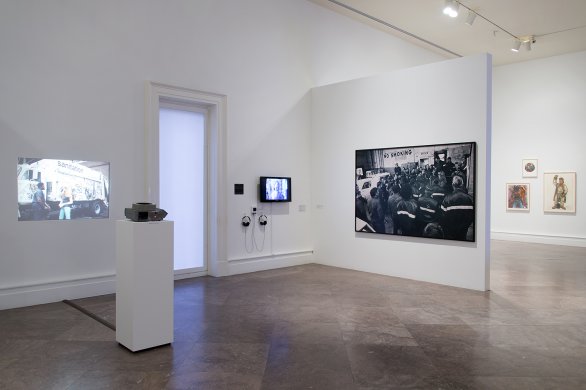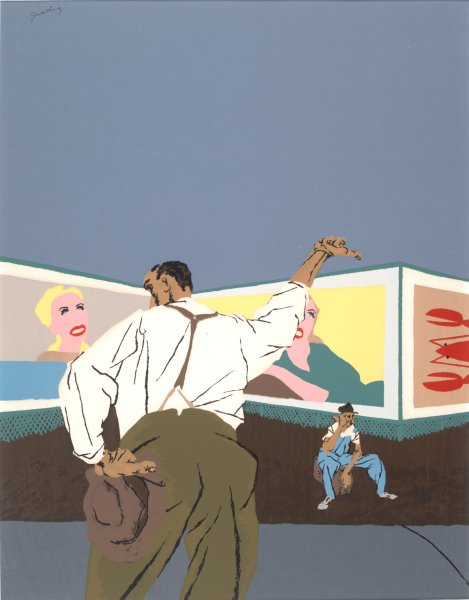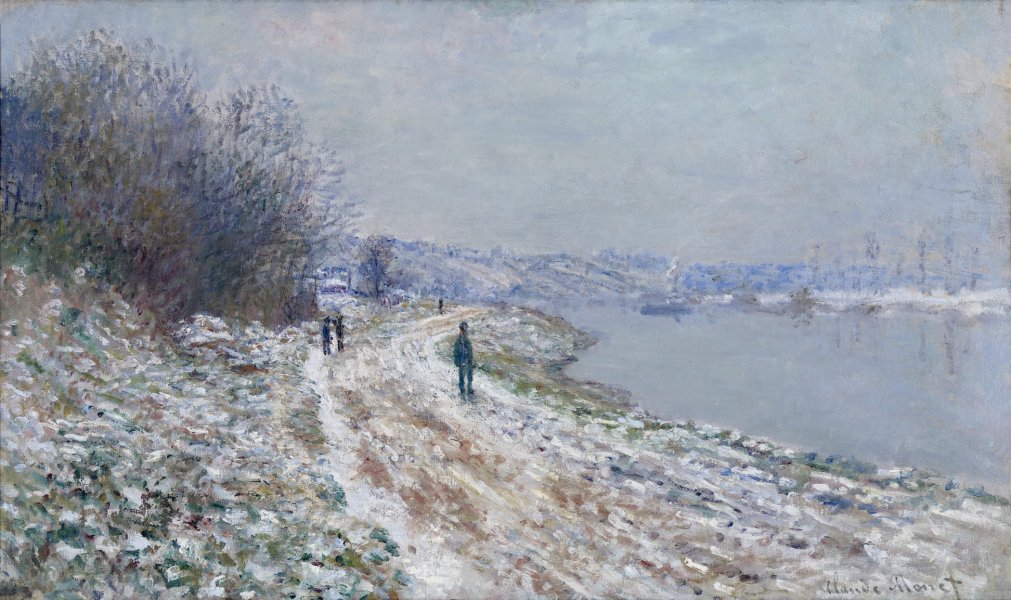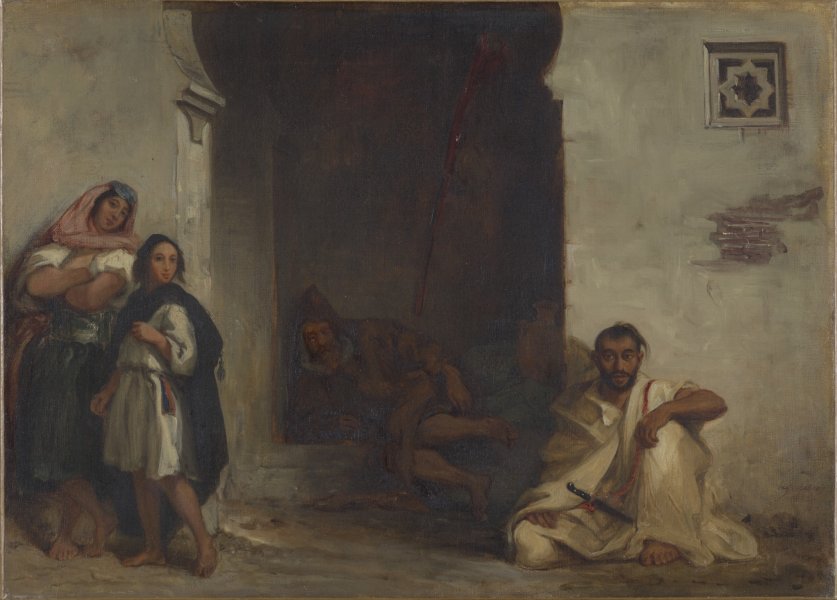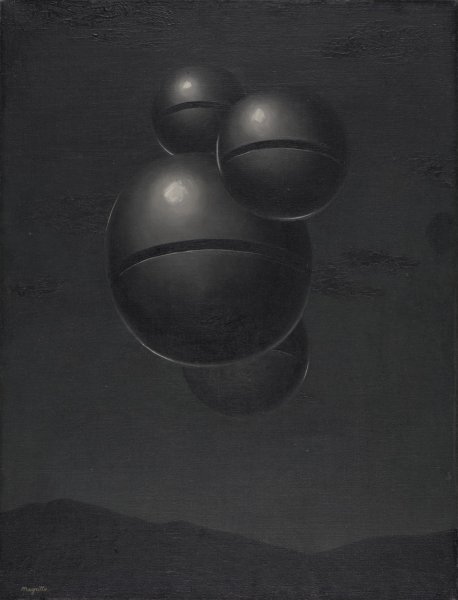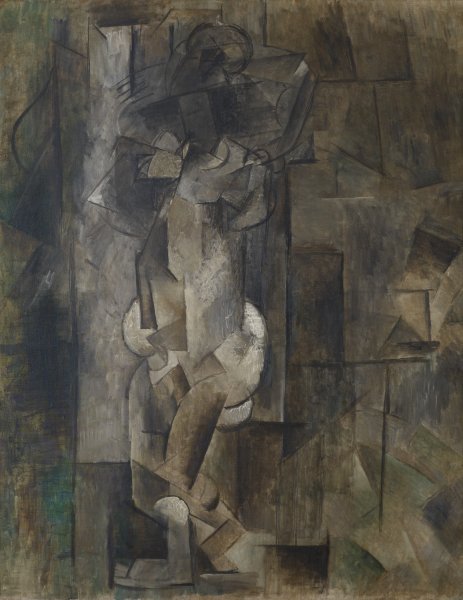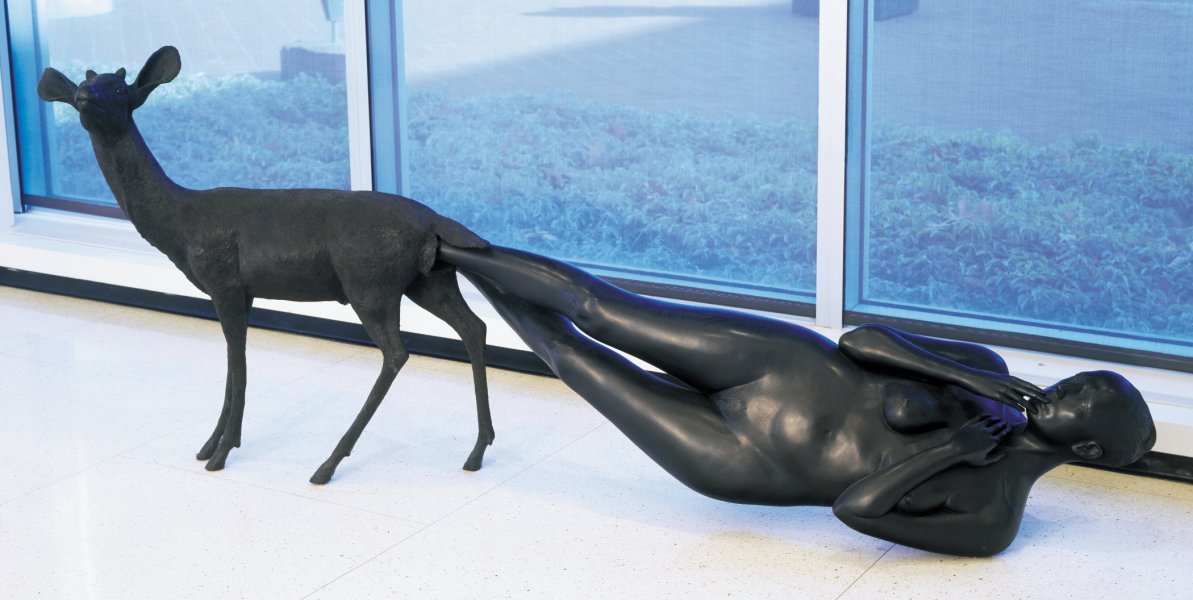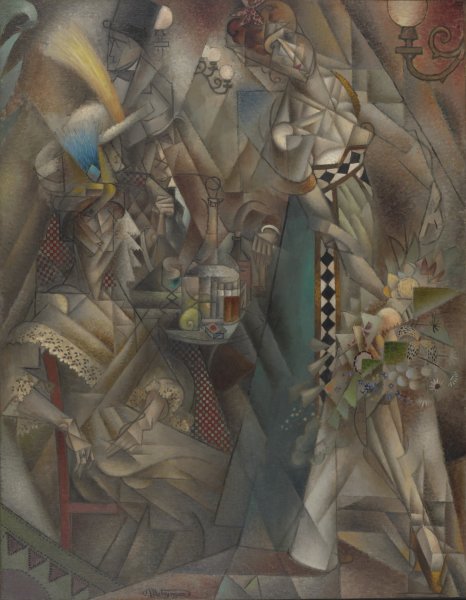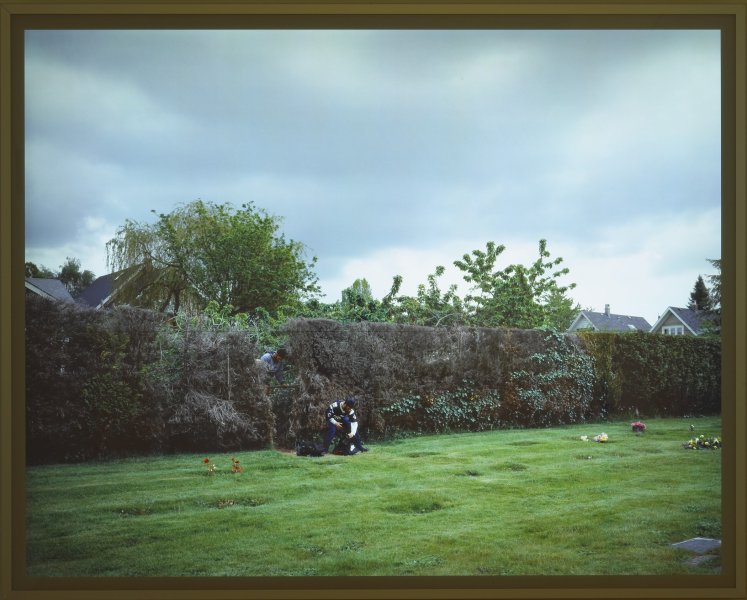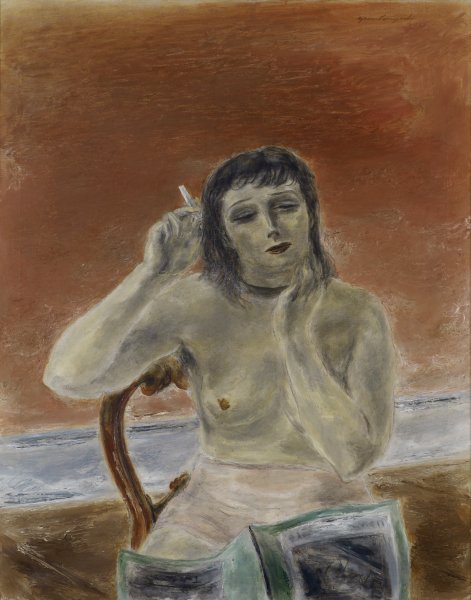Robert Gwathmey
American, 1903-1988
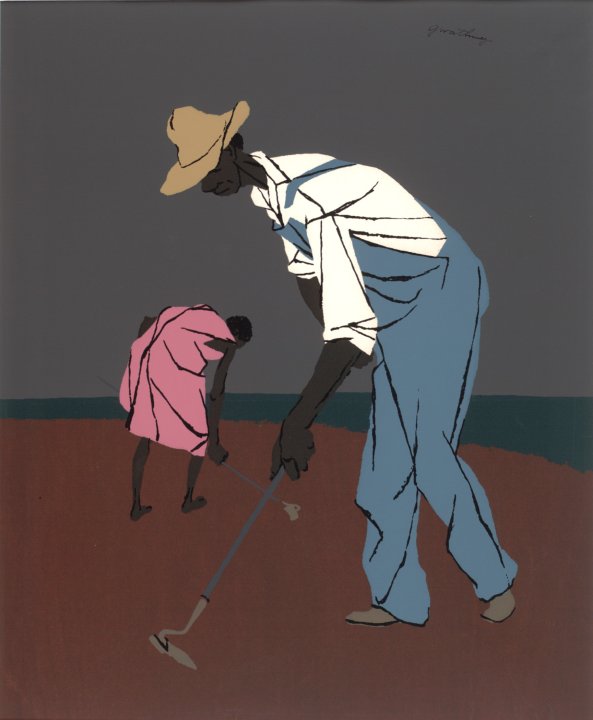
Share Cropper, 1943
Artwork Details
Materials
silkscreen
Measurements
sheet: 17 x 14 1/16 inches (43.18 x 35.72 cm)
Collection Buffalo AKG Art Museum
Credit
Room of Contemporary Art Fund, 1943
Accession ID
RCA1943:15.1
Robert Gwathmey was born and raised in the rural American South and came of age in the 1920s and 1930s, a time of great struggle for farmers, day laborers, and migrant workers. Gwathmey, considered to be one of the first white artists to portray black workers in the South with dignity and sympathy, advocated his entire life against the exploitation of the poor. This vibrantly colored silkscreen depicts a couple Gwathmey identified as sharecroppers, making them just two of more than eight million American farm workers who, by the 1940s, did not own the land they worked. Instead, they received an allocation of land from another farmer and paid to rent tools and purchase seeds. At the end of each season, they would receive a "share"—usually half—of the crops they had produced, which was used to pay off the previous season's debts. Gwathmey's prints from this period capture the height of sharecropping and tenant farming in the United States; soon it would begin to decline due to the increasing affordability of mechanized farm equipment. With the rise of industrialized farming, countless sharecroppers like those in Gwathmey's print were forced off of farms and migrated north in search of work, often in factories.
Label from Overtime: The Art of Work, March 8–May 17, 2015
